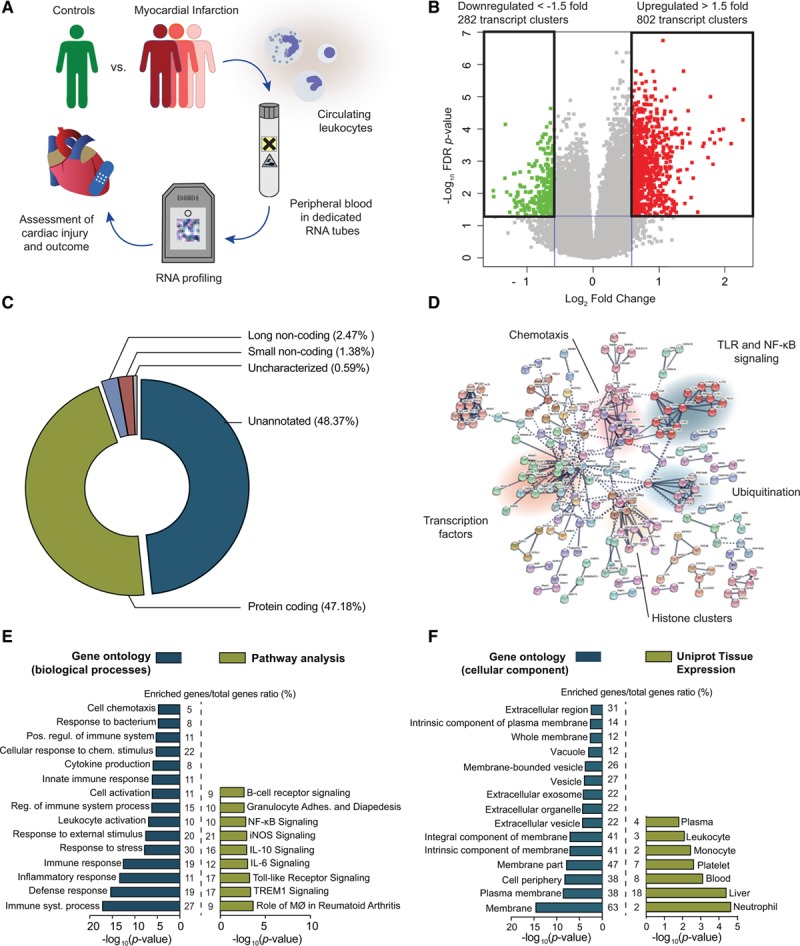Figure 1.

Coding and noncoding RNAs in whole blood reflect inflammatory pathways involved in the acute phase of myocardial infarction (MI). A, We performed unbiased RNA profiling in peripheral blood of patients presenting with acute MI, with the specific aim of identifying patterns that relate to cardiac injury and outcome. B, This approach revealed 802 upregulated and 282 downregulated transcript clusters in the acute phase of MI (downregulated to the left in green, upregulated to the right in red), with a fold change compared with stable controls >1.5 or <1.5 and adjusted P<0.05. C, These transcripts were predominantly protein coding (47%) but also included long noncoding transcripts (1.7%), although many remained unannotated (48.5%). D, Network analysis shows that many of these transcripts cluster together in networks associated with immune response, chemotaxis, and Toll-like receptor/NF-κB (nuclear factor-κB) signaling. E, These biological processes are confirmed by gene ontology analysis (left, blue), and additional pathways in IL (interleukin) signaling, MAPK signaling, and neutrophil activation were activated (right, green). F, The identified transcripts are predominantly expressed on the cell membrane (left, blue), and were enriched in circulating leukocytes (right, green). All P values are false discovery rate (FDR) adjusted for multiple testing. iNOS indicates inducible NO synthase; MØ, macrophages; MAPK, mitogen-activated protein kinase; TLR, toll-like receptor; and TREM1, triggering receptor expressed on myeloid cells 1.
